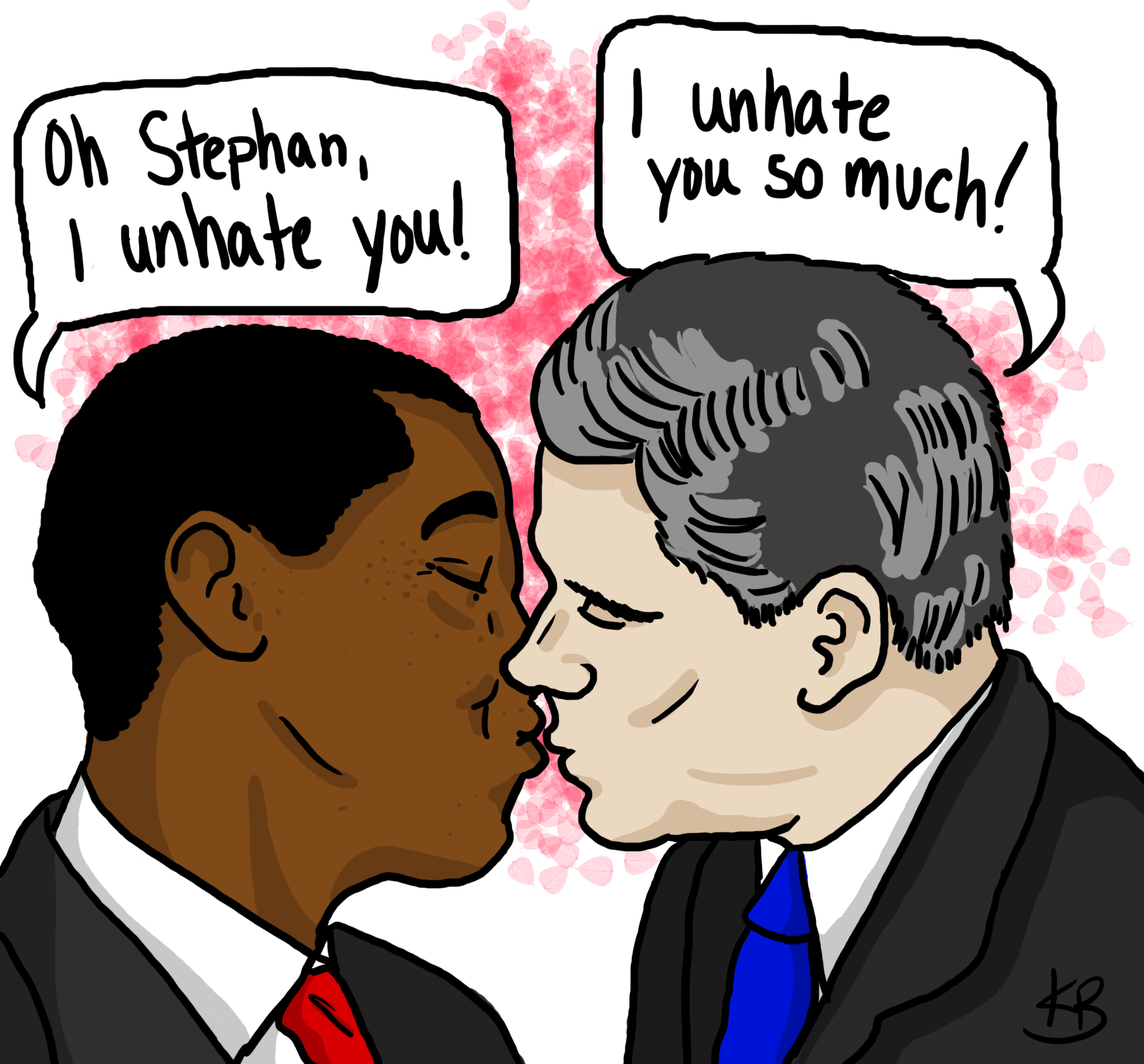 The Benetton group was hip. It wasn’t unnatural to see teens walking down the street sporting the United Colors of Benetton…in 1970.
The Benetton group was hip. It wasn’t unnatural to see teens walking down the street sporting the United Colors of Benetton…in 1970.The Italian clothing giant was founded in 1965 and flourished during the ‘70s and ‘80s. “In the ‘70s, everyone loved Benetton. It was very stylish and everyone had at least one piece of clothing from them,” said Helen Merk, a credit manager at a clothing distributing company in Montreal.
Nowadays, they’re finding desperate and childish ways to get their name back on the market, no matter how controversial that way may seem.
Recently, they released the “unhate” ad campaign which portrays world leaders kissing each other. Despite Benetton’s efforts to ensure it was to promote love and “unhate” among populations and people of different religions, they’ve received an enormous share of criticism and even potential lawsuits.
This ad campaign, despite Benetton’s assurances that it’s to raise awareness for peace and create an equal world, actually represents an extremely feeble attempt to get some advertisement.
So far, their ad campaign hasn’t really worked. This attempt at “shock advertising” that made them so famous in the ‘70s and ‘80s has brought forth very negative results.
Perhaps the most controversial shows Pope Benedict XVI kissing the imam of the al-Azhar mosque in Egypt, Ahmed Mohamed el-Tayeb. The Vatican immediately issued a complaint, saying that legal action will now be taken against the United Colors of Benetton. The Vatican has been carefully controlling the pope’s image for more than 500 years, and this is no different.
“It is wounding not only to the dignity of the Pope but also to the sensibilities of the faithful,” said the Vatican after the ads were released.
The White House released a statement stating the absurdity of the campaign and that “the White House has a longstanding policy disapproving of the use of the president’s name and likeness for commercial purposes.” Other ads in the campaign showed President Obama kissing China’s President Hu Jintao and the Venezuelan leader Hugo Chavez.
Benetton has seen a tremendous drop in its numbers since the emergence of fashion brands such as H&M and Zara. While these stores have seen their numbers grow immensely in the past decade, the United Colors of Benetton have struggled to keep a clientele that was quickly turning towards these new trends in fashion.
“Shock advertisement” in general doesn’t have people appreciating the brand but has them jeering at it. People tend to appreciate smart and innovative advertisement that attracts people in a positive way.
“It’s barbaric to portray these people kissing each other. It’s a cheap way to advertise and a pathetic way to get your name out there,” says Concordia political science student Panagiota Paps.
People recognize that Benetton’s apparent campaign of “unhate” is but a selfish way of getting themselves attention. Pushing the envelope is one thing, but being responsibly tasteful is another. What the Benetton group needs to understand is that there is such a thing as bad press.





The Benetton campaign is designed to shock, grab attention, and ultimately sell products. It is important that we, as consumers, always be wary of manipulative marketing tactics.
But I have some serious problems with the undertone of this article, and the subtle homophobia that underlies most of the criticism that this campaign has received.
The author criticizes Benetton of lacking in good taste. So, by default, does this mean that men who kiss other men are “in bad taste”? Would we be as disgusted and shocked with Benetton’s tactics or taste had the ad depicted a heterosexual kiss?
While the author argues about how using the likeness of famous people for branding is a cop-out, what most of the article actually seems to find distasteful is the fact that the famous people are engaging in a homosexual kiss – not the fact that their likeness is being used in itself. And this is problematic.
“It’s barbaric to portray these people kissing each other.” This quote made me cringe. By “these people,” Paps is not referring to famous people, for showing a famous man and woman kissing would not be considered barbaric. Paps is suggesting that two men kissing is barbaric, and this is rife with hate and homophobia.
Before we criticize Benetton for sinking to the lowest common denominator to shock and sell products, we need to ask ourselves why we are so shocked and appalled by this anti-hate campaign anyways, and why the sight of two prominent people of the same sex sharing a kiss prompts such controversy and backlash.
Until the likeness of two men kissing, whether prominent or not, is no longer considered shocking, disgusting, and in “bad taste”, we cannot honestly say we believe in complete equality and do not engage in underlying, subtle, and unconscious homophobia.
Half of the ads also show men and women kissing. This article is in no way promoting homophobia.
It is interesting, however, that the examples used in this article – and in most that have analyzed the “shocking” campaign – are always of how the ad has used two prominent male figures kissing, rather than any of the heterosexual kisses displayed. I have yet to find an article where the author says, “This campaign is sure to shock because it portrays (Insert famous woman) and (insert famous man) kissing.”
The focus of the criticism against the campaign has been fueled by the fact that the leaders are portrayed engaging in a gay kiss.